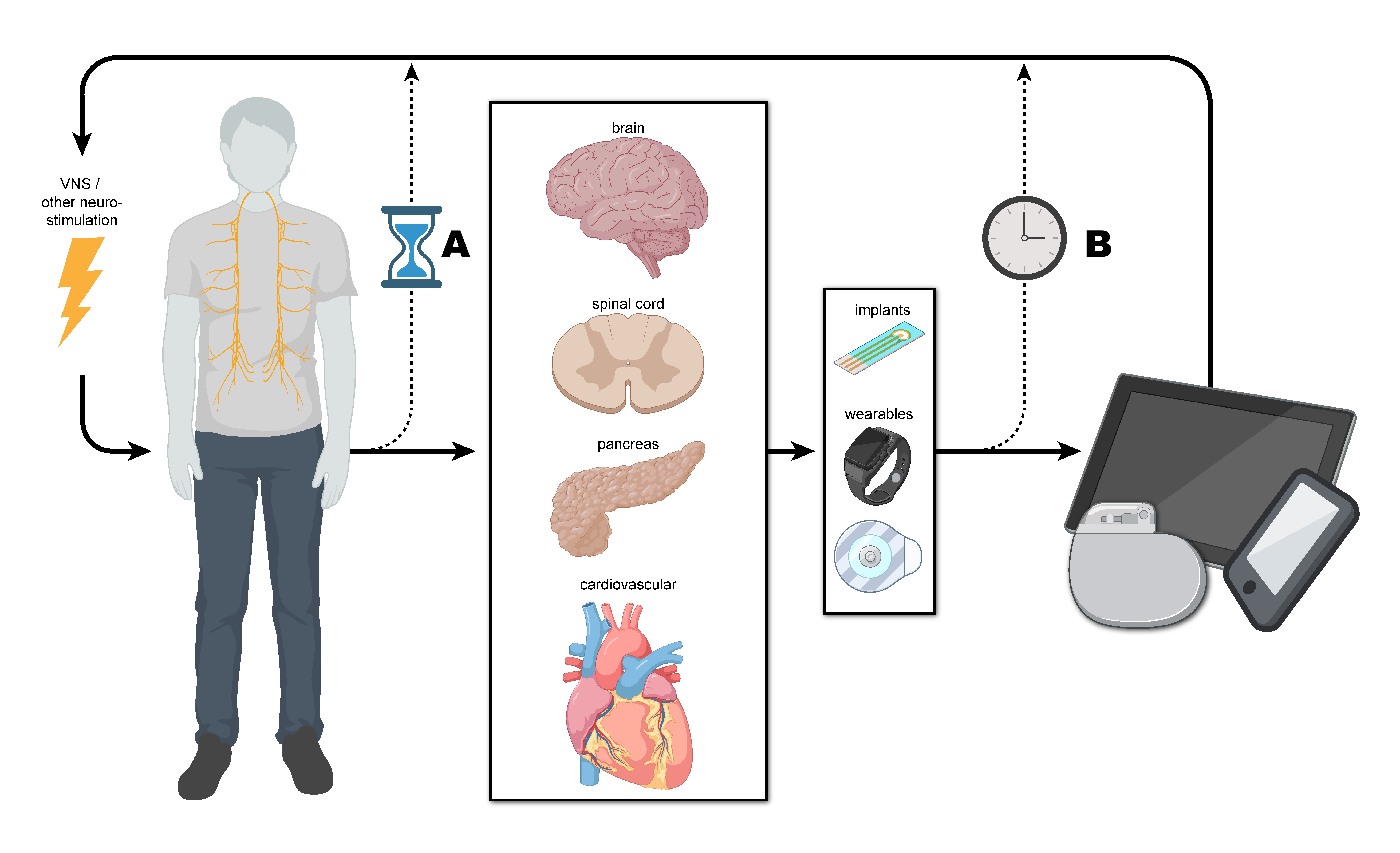Vagus nerve stimulation (VNS) has become a successful neuromodulatory technique for many clinical applications, including treating epilepsy and enhancing the effects of rehabilitation. VNS therapy can apply pulses of stimulation via either implanted or noninvasive interfaces, leading to the release of factors that can help rewire broken neural circuits, modulate end-organ function, and more. Although this therapy has shown promise clinically, it is not clear if stimulation needs to be precisely timed to specific events or if it can simply be administered regardless of physiological state.
Researchers at the University of Miami assessed this pressing question in a recent review published in the journal Bioelectronic Medicine: Does VNS timing matter? The team of co-authors came from several areas of the University of Miami (Biomedical Engineering, The Miami Project to Cure Paralysis, Otolaryngology, and Neurological Surgery) or Newton Wellesley Neurology Associates. Motivation for this review mainly came from Dr. Patrick Ganzer’s (Assistant Professor at the University of Miami) previous experience using reactive VNS paired with movements to enhance the effects of rehabilitation following neurological injury. These preclinical studies demonstrated that VNS paired with rehabilitation can help rewire broken neural circuits following spinal cord injury, stroke, or peripheral nerve injury. Recovery of upper limb motor function was mediated by enhanced neural plasticity, generally leading to more connections from the brain to once-paralyzed muscles.
Critically, these preclinical studies also demonstrated that VNS must be paired with movements or the therapy does not work. VNS delivered after rehabilitation or many seconds after a movement fails to enhance recovery. Therefore, VNS paired with rehabilitation seems to have nerve stimulation timing requirements. However, it is not entirely clear for other applications of VNS therapy if stimulation timing matters.
Dr. Ramanamurthy Mylavarapu, a postdoctoral researcher in Dr. Ganzer’s lab, led the review article assessing potential VNS timing requirements across an array of therapeutic applications. Overall, the importance of VNS timing is nuanced and can be split into two distinct branches: 1) timing of intervention concerning a disease’s progression and 2) timing with relation to disease-specific events (such as the onset of a seizure in epilepsy). While there have been many successful applications of open-loop VNS (where stimulation is not reactive), several studies have demonstrated that closed-loop VNS can be optimal for providing therapeutic benefits. Future studies are needed in this area, and will likely leverage advanced biomarkers or algorithms to best decode complex disease events that can trigger closed-loop VNS for enhancing function.
We believe that these insights will be important for informing not only our future studies but also for implementing next-generation closed-loop VNS protocols in general. Such understanding will allow for continued optimization of current VNS applications to maximize clinical outcomes and provide a blueprint for utilizing closed-loop VNS approaches across new clinical applications.
This work was funded by grant 1R01NS131493-01 provided by the National Institute of Neurological Disorders and Stroke at the National Institute of Health.
Mylavarapu, R. V., Kanumuri, V. V., De Rivero Vaccari, J. P., Misra, A., McMillan, D. W., & Ganzer, P. D. (2023). Importance of timing optimization for closed-loop applications of vagus nerve stimulation. Bioelectronic Medicine, 9(1), 8





